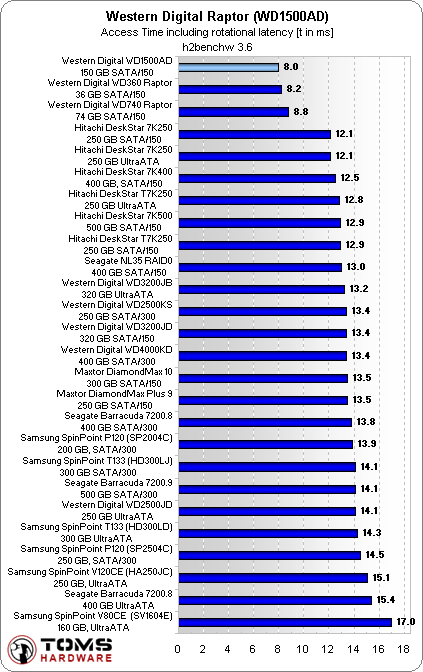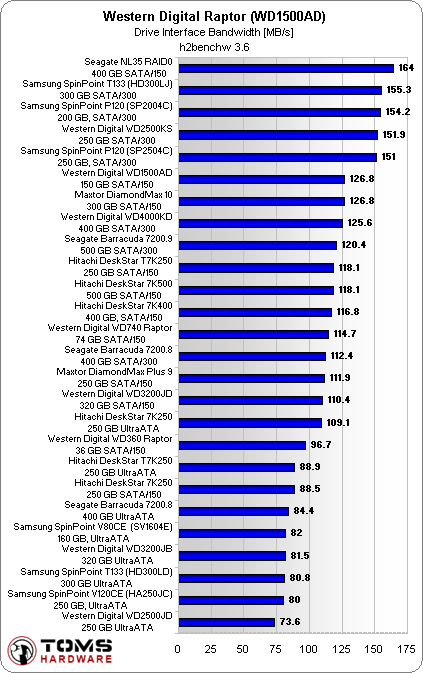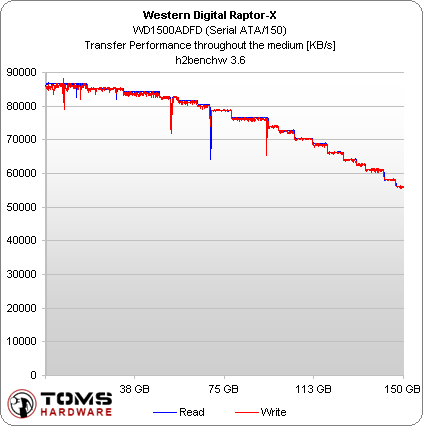WD1500AD Raptor X-Tends Performance Lead
Average Access Time
An average access time of 8.0 ms (including seek time and rotational latency) is slightly better than the numbers we measured for predecessors. All the 7,200 RPM drives are clearly slower, which can be noticed every time a large number of small files is to be loaded, such as Photoshop with lots of plugins for example. A disadvantage, though, clearly is the access noise that is caused by the rapid movements of the read/write heads. At the same time, the spinning noise of the drive is very acceptable, and won't be very noticeable when mixed with the noise that is generated by your power supply, processor and graphics chip fans.
Interface Performance
Western Digital remains at Serial ATA/150 rather than going for the 300 MB/s interface bandwidth. As you can see in all the other benchmarks, this does not have any negative effect at all. Even though other drives offer more interface performance, they do not perform any better in the important benchmark disciplines. This, by the way, also applies to the RAID 0 setup that we built using two Seagate 7,200 RPM drives.
Data Transfer Performance
If data transfer performance is all you are looking for - video and audio editing in high quality would require high throughput - the RAID 0 array definitely beats the WD1500 Raptor. However, the amazing transfer performance is not enough to dominate in the application benchmarks.
Get Tom's Hardware's best news and in-depth reviews, straight to your inbox.

Patrick Schmid was the editor-in-chief for Tom's Hardware from 2005 to 2006. He wrote numerous articles on a wide range of hardware topics, including storage, CPUs, and system builds.
-
MacSH Two 7200 rpm drives in raid0? Bah, I'll take my two raptors in a raid0 any day ... Holy lack of bottlenecks, Batman!Reply


